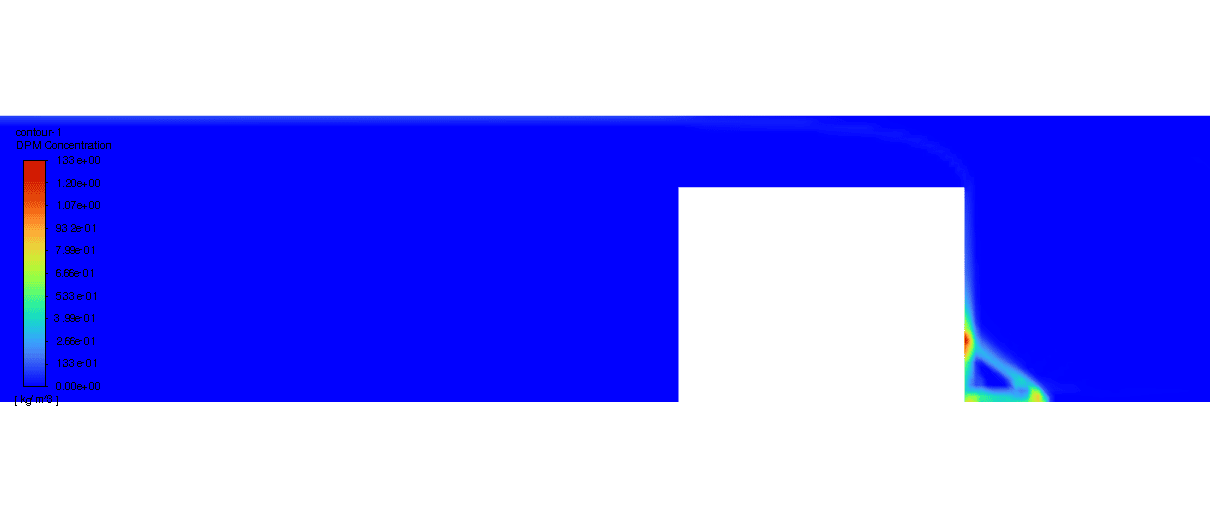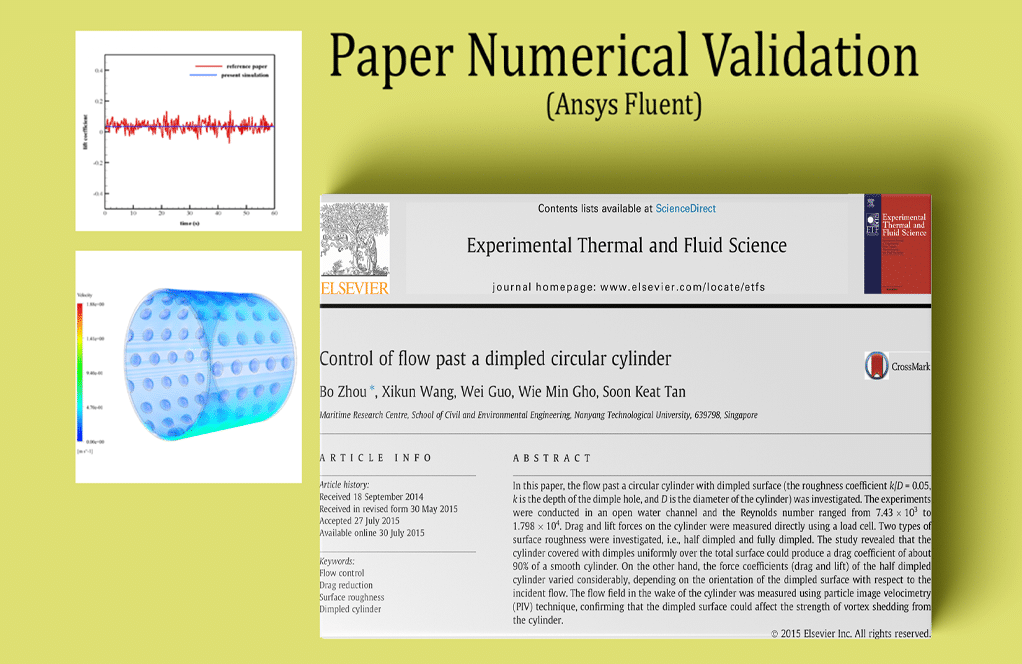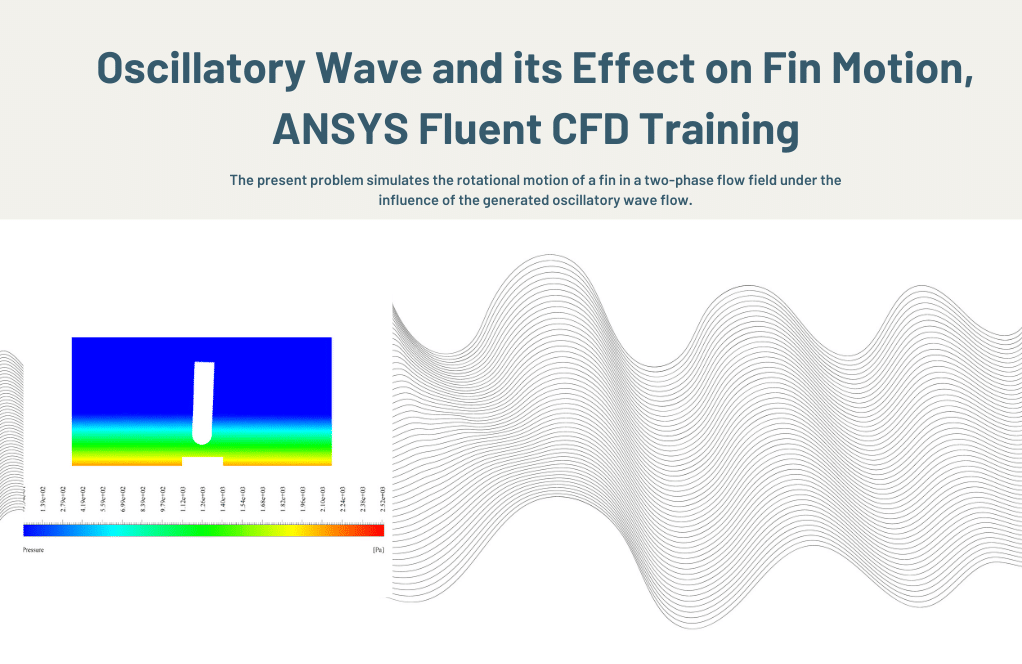Erosion In An Obstruction Channel Using DPM
$120.00 $60.00 Student Discount
- The Design Modeler software is used to create the geometry.
- A structure grid is generated via ANSYS Meshing software.
- The discrete Phase Model (DPM) is used to model sand particles and erosion/accretion.
To Order Your Project or benefit from a CFD consultation, contact our experts via email (info@mr-cfd.com), online support tab, or WhatsApp at +44 7443 197273.
There are some Free Products to check our service quality.
If you want the training video in another language instead of English, ask it via info@mr-cfd.com after you buy the product.
Description
Project Description
In this project, the impure water flows in an obstruction channel using ANSYS Fluent software. The aim of the study is to determine the obstacle effect on water pathlines and how it can cause damage to the channel over time. As a result, the Discrete Phase Model (DPM) module is used to simulate sand particles and erosion/accretion.
This product is the 5th chapter of the DPM training course.
The geometry is designed in ANSYS Design Modeler software. Then, it was meshed by ANSYS Meshing software. A structured mesh grid is generated which leads to 1155000 quad elements.
Methodology(Erosion In An Obstruction Channel)
The discrete phase model (DPM) is used to inject 1mm in diameter sand particles. It`s a two-way DPM coupling because the dense sand particles could affect the continuous phase. Note that, due to the nature of the Erosion/Accretion phenomena, the steady-steady solver is performed.
Conclusion
After the simulation, the two-dimensional contours clearly depict the effect of sand particles and the obstacle on the channel wall. The high-velocity (15m/s) inlet and collision with the obstacle result in an extreme pressure gradient, especially near the top wall of the channel. As can be seen in the velocity contour, the flow velocity reaches 93.5m/s as its maximum.
In addition, the residence time contour shows that the particles cover a 5-meter distance in less than 0.2 seconds which is another proof of high-velocity flow! This process led to erosion over time specifically behind the obstacle and on the top wall of the channel. These results are visible in erosion/accretion contours, no matter which theory you obtain (Oka, Mclaury, Finnie,..)

















Aileen Gusikowski –
What makes the DPM coupling in this simulation ‘two-way’ and how does it enhance the erosion model?
MR CFD Support –
The ‘two-way’ coupling in the DPM module allows for interactions between the discrete sand particles and the continuous water phase. In this model, the momentum exchange between heavy, dense sand particles and the fluid flow can influence the flow pattern. This coupling increases the accuracy of erosion prediction as it accounts for the impact of particle behavior on the flow dynamics and subsequently on the erosion rates of the channel walls.
Mr. Josiah Pollich –
What findings indicate the highest erosion rate areas in this simulation?
MR CFD Support –
Using different erosion theories like Oka, Mclaury, and Finnie, this simulation illustrates high erosion rate areas through erosion/accretion contours. Erosion is particularly evident behind the obstacle and on the top wall of the channel, likely due to turbulence and high-velocity impacts of sand particles in these regions.
Frank Corkery –
The simulation you performed seems extremely comprehensive! Could you explain a bit more about how ANSYS Fluent calculates the erosion rate on the channel walls?
MR CFD Support –
Certainly! ANSYS Fluent calculates the erosion rate using the Discrete Phase Model (DPM) by tracking the trajectories of individual particles impacting the wall. When using erosion models (like Oka, Finnie, or McLaury), Fluent takes into account factors such as particle size, velocity, impact angle, and material properties to estimate the rate of material removal at different locations on the channel walls. It uses erosion equations that are specific to the selected theory to simulate the cumulative effect of impacting particles, determining where erosion is most likely to occur and how severe it will be.
Lavada Bahringer –
The project sounds comprehensive, but I’m curious, what specific erosion/accretion theory did you choose to apply in the simulation and why?
MR CFD Support –
In this simulation, erosion/accretion was modeled based on the Oka theory, which was chosen due to its suitability for cases where high-velocity particle impacts and related material wear are of concern. This theory provides a reliable prediction of erosion rates when dealing with dense particulate flows, ensuring accurate representation of the phenomena in the study.
Elmira Shanahan –
What theories are used for analyzing erosion in this project? Does the choice of theory significantly affect the simulation results?
MR CFD Support –
Various erosion prediction theories such as Oka, McLaury, and Finnie are available to analyze erosion in the simulation. Each theory offers a different approach to modeling the impact of particles on surfaces, primarily based on their experimental and analytical foundations. The choice of theory can indeed affect the simulation results because they model the erosion mechanics differently, leading to variations in predicting the rate and pattern of wear on the channel walls.
Lenore Schinner DDS –
I’m impressed with the level of detail the simulation provides, particularly how the obstruction impacts the flow pathlines in the channel. It’s interesting to see how erosion patterns develop over time. I’m curious–how does the use of different theories (Oka, Mclaury, Finnie, etc.) affect the interpretation of the erosion and accretion results?
MR CFD Support –
The different erosion theories such as Oka, Mclaury, Finnie, etc., provide various approaches to predicting material loss due to erosion. Each theory has its own methodology to calculate the erosion rate based on impacting angle, velocity, material properties, and particle characteristics. The use of different theories might change the predicted erosion patterns and rates. Interpretation of the results using different theories can provide a comprehensive understanding of the caustic phenomena in the channel and help in selecting the most appropriate theory for specific conditions applied in simulation and design optimization.
Rachel Padberg –
The review perfectly highlights the capacity of the simulation to analyze and predict erosion patterns. Just one question: is it possible to adjust the particle size used in the DPM to simulate different sand scenarios and how it would affect the erosion results?
MR CFD Support –
Absolutely, you can adjust the particle size within the Discrete Phase Model to simulate varying scenarios which include different types and sizes of particles. This alteration can significantly impact the results as different sizes will interact with the flow and the channel walls differently, affecting the pattern and rate of erosion.
Fannie Kertzmann IV –
Did the product include animation of erosion patterns over time to visually assess the effect?
MR CFD Support –
Animations showing the erosion patterns and their progression over time can greatly enhance understanding of the dynamics. We’ll ensure to consider your suggestion and see if such visual simulations are available.
Kaylie Hills DVM –
Absolutely enlightening project! The detail on the erosion effects and pathlines was meticulously showcased. Seeing the distribution of the erosion and the residence time contour was particularly insightful.
MR CFD Support –
Thank you so much for your positive feedback on the Erosion In An Obstruction Channel project. We are glad to hear that you found the simulation results insightful and informative. It’s great that the details on erosion effects and pathlines met your expectations!
Edgar Langworth –
Delighted by the depth of analysis this product offers on erosion patterns in the obstruction channel. Brilliant illustration of the erosion and accretion contours utilizing various theories. Well done MR CFD on providing such insightful simulations to grasp the complexities of DPM and erosion phenomena.
MR CFD Support –
Thank you for your kind words! We’re thrilled to hear that our product has been helpful in illustrating the complexities of erosion processes and DPM simulations. Your positive feedback inspires us to continue delivering high-quality simulations and analyses.
Ansel Willms –
Is erosion severity behind the obstacle and on the top channel wall similar or does it vary significantly?
MR CFD Support –
Erosion severity varies between locations in the channel due to factors like flow turbulence, velocity, and the angle of impact. Typically, areas directly downstream of the obstacle experience higher levels of erosion due to increased turbulence and impact from particles carried by the flow. The top wall of the channel, depending on its proximity to the obstacle and the flow velocity, may undergo lesser or greater erosion. The simulation’s erosion/accretion contours would provide specific insights into these variations.
Valentin Dibbert –
How is it possible to define the erosion model for different theories like Oka, Mclaury, Finnie, etc. in ANSYS Fluent? I’d like to know the steps for setting them up for a project I am planning.
MR CFD Support –
In ANSYS Fluent, the erosion model for different erosion theories can be set up through the ‘Discrete Phase Model’ (DPM) where erosion rates can be estimated using different theories like Oka, Mclaury, and Finnie. To set them up, you will need to: 1. Enable the ‘Discrete Phase Model’ from the models section, 2. Go to the ‘DPM’ panel and choose ‘Erosion’ under ‘Physical Models’, 3. Select the desired erosion theory from the available list, 4. Define the material properties of both the particle and the wall, and 5. Set the injection parameters for the particles. Each erosion model may require specific parameters depending on factors such as impact angle, velocity, and particle size.
Mrs. Shany Kiehn –
I’m curious, how does the use of the DPM module enhance the understanding of erosion patterns compared to not using it?
MR CFD Support –
The use of the DPM module allows for the tracking of discrete sand particles within the flow, providing insights into erosion patterns by simulating the particle-wall interactions. These interactions are critical to identifying regions of high wear and help predict erosion rates, offering a more accurate depiction of erosion than if the discrete phase were not considered.
Meggie Morar DDS –
What strategies can be applied to minimize the erosion effect in such obstacle channels?
MR CFD Support –
To minimize erosion in obstacle channels, strategies may include refining the computational model to more accurately predict erosion patterns, modifying the channel or obstacle geometry to reduce turbulent flow and particle impact zones, implementing erosion-resistant materials on high-wear areas and perhaps introducing flow straighteners or diffusers to redistribute energy and minimize direct impacts to the surfaces.
Barrett Schmeler –
Which erosion theory proved most useful in this study and why?
MR CFD Support –
Admin: In this particular simulation, the most practical erosion theory depends on the character of interaction of sand particles with the obstacle and the channel wall under the given flow conditions. The Oka theory might be better for predicting erosion in conditions with properties like those simulated but to determine definitively which theory is most suitable, a thorough comparison of each erosion model’s predictions with the experimental or field data would be necessary.
Lennie Mraz DDS –
The project sounds fascinating! Could the erosion contours show variations with particle size, or is 1mm the standard size for this study?
MR CFD Support –
Different particle sizes can indeed affect the erosion patterns observed in the simulation. However, for this particular study, the sand particles are set to 1mm in diameter to analyze the erosion process under these specific conditions. If needed, additional simulations varying particle size could be conducted to observe how erosion contours might change.
Fabian Prosacco –
What are the theories, like Oka and McLaury, mentioned at the end, and how do they differ?
MR CFD Support –
These theories relate to the prediction of erosion due to particle impacts. Oka’s theory is a more recent development that incorporates more complex material behavior, while McLaury’s and Finnie’s are earlier models with different assumptions about the erosion process. Each has its strengths in different applications, depending on the material properties and impact conditions.